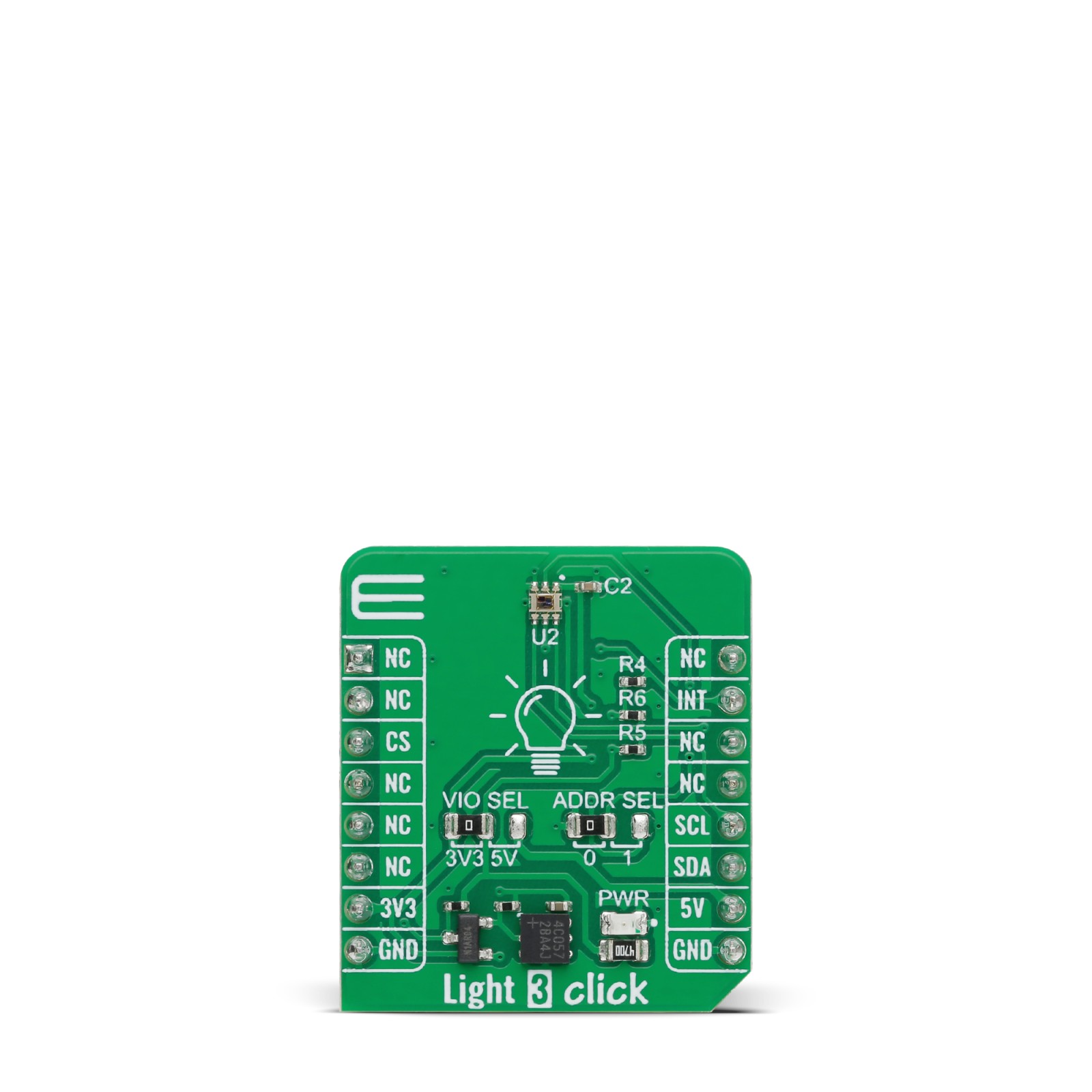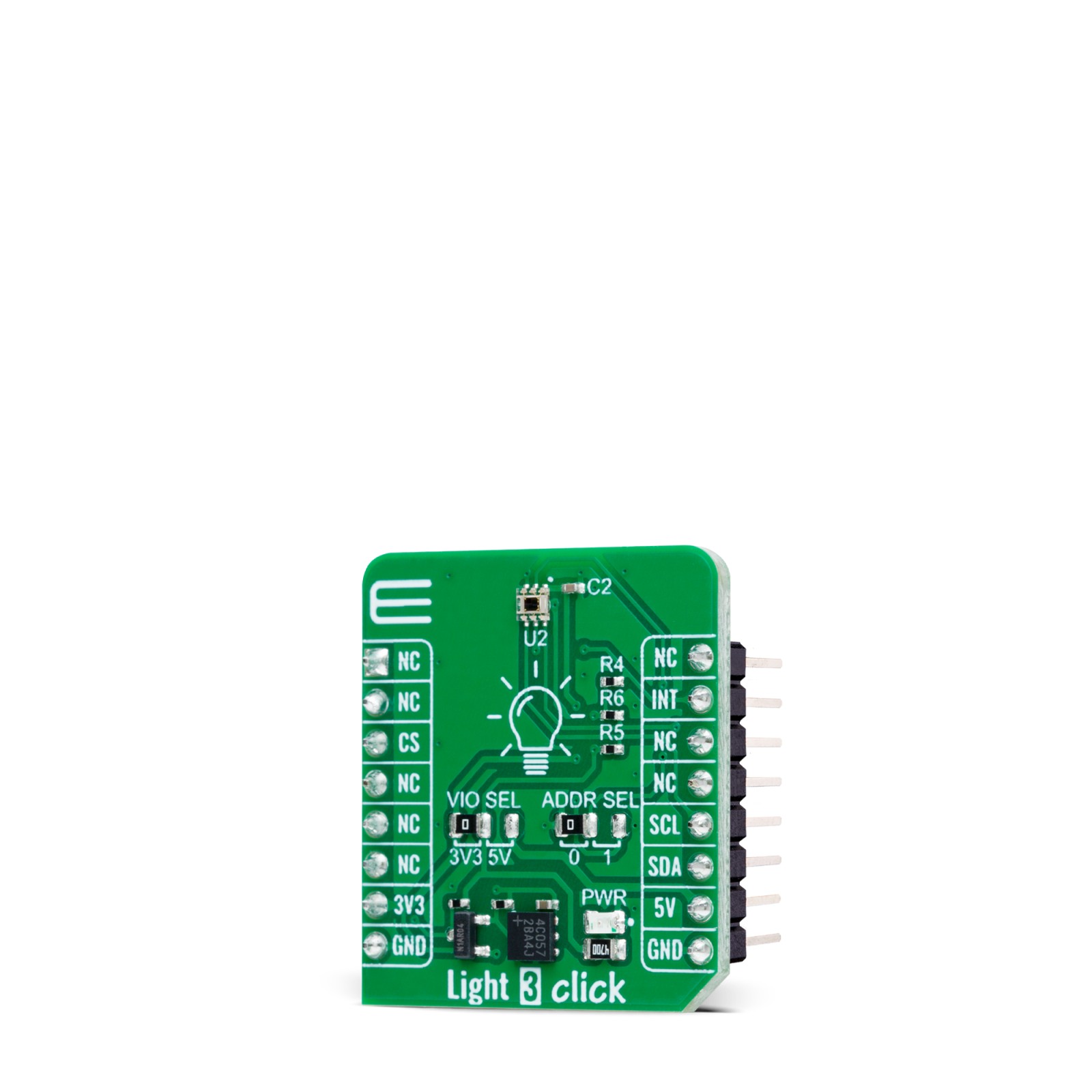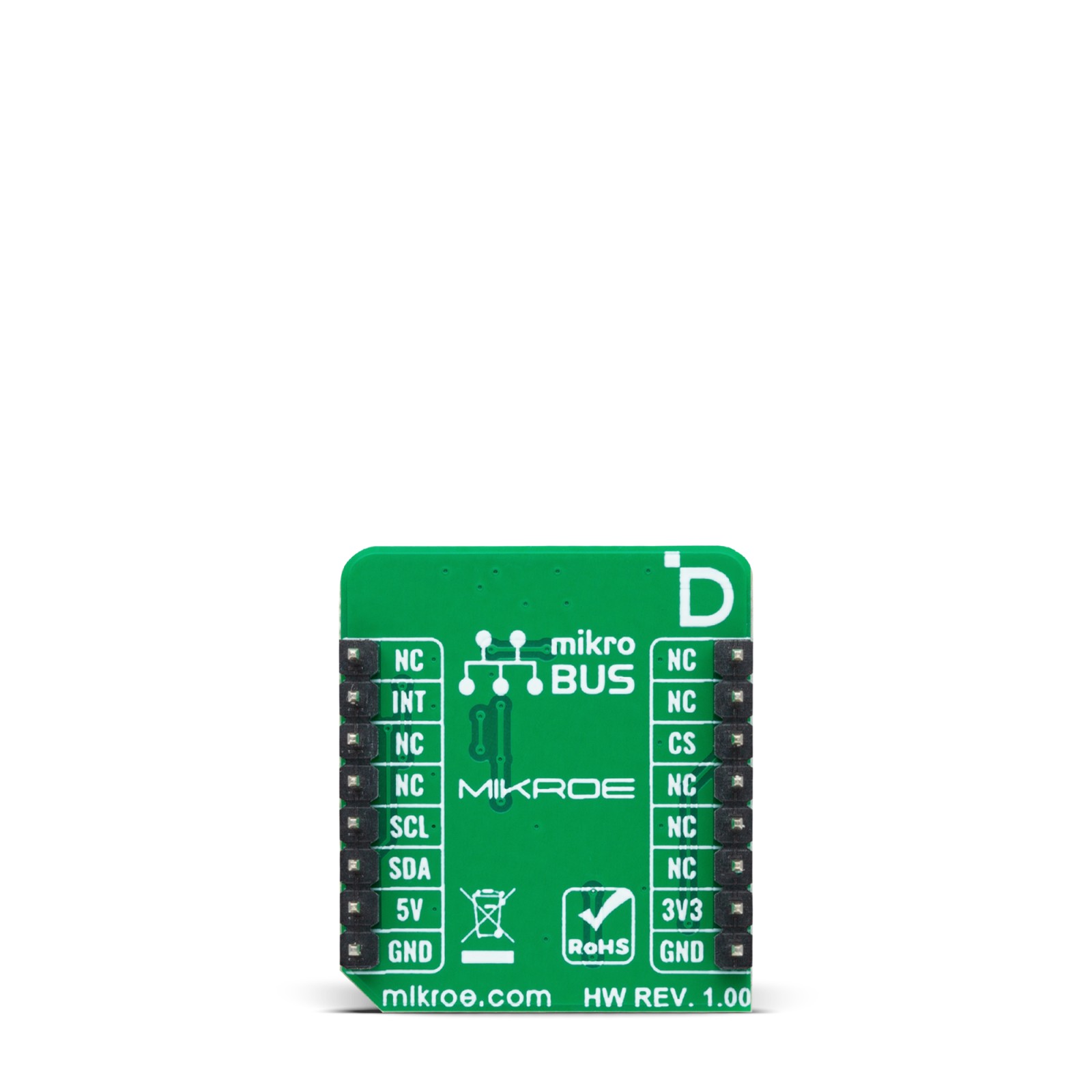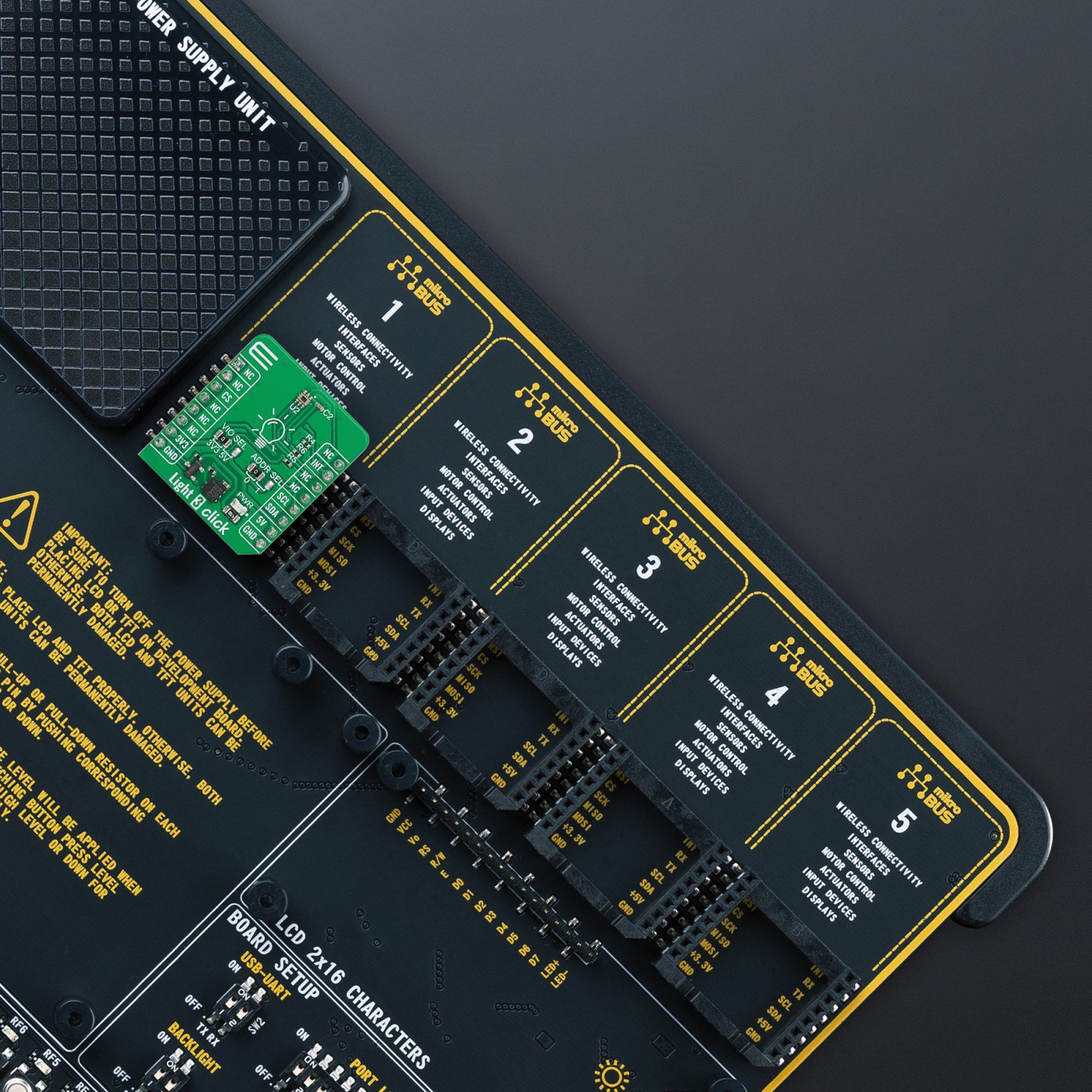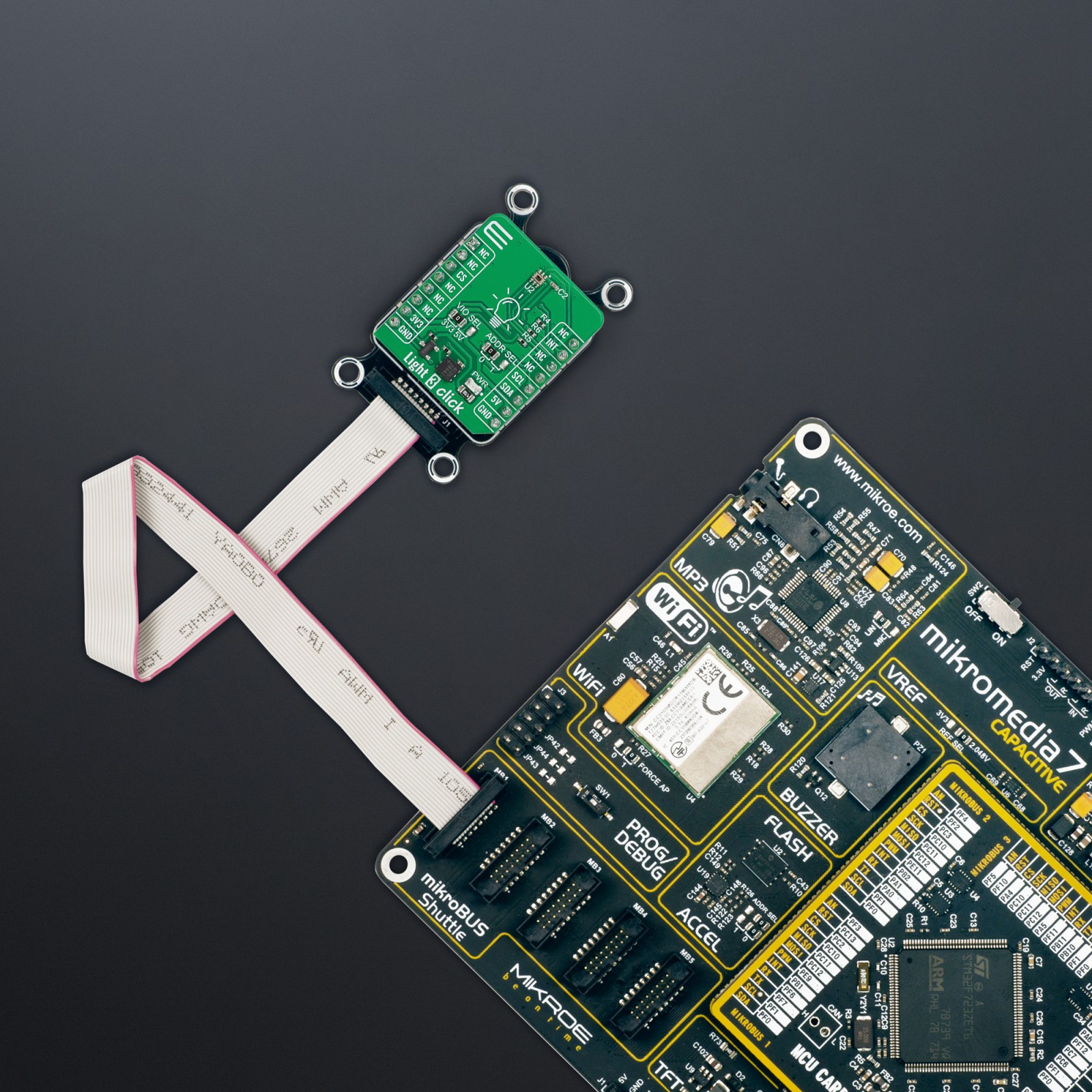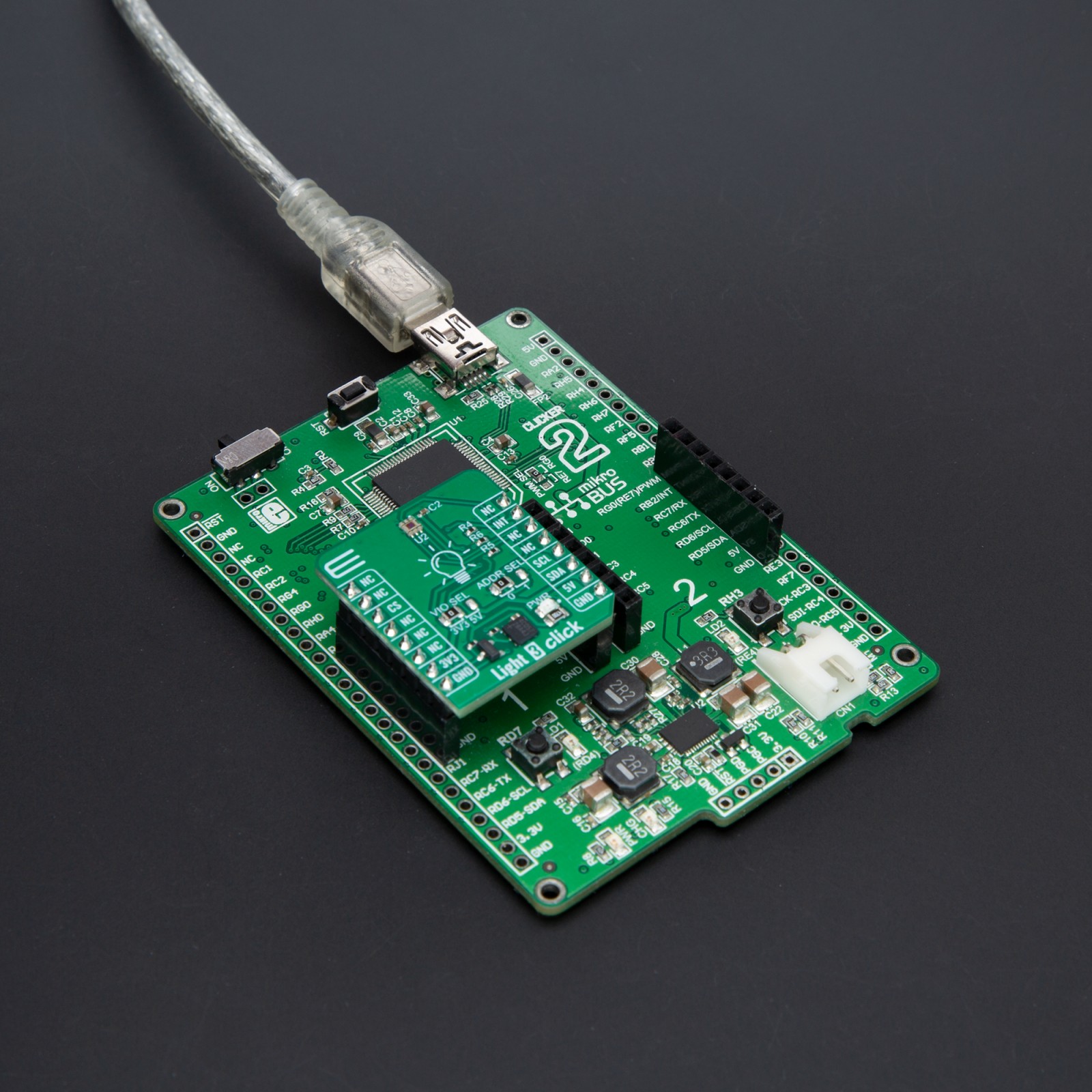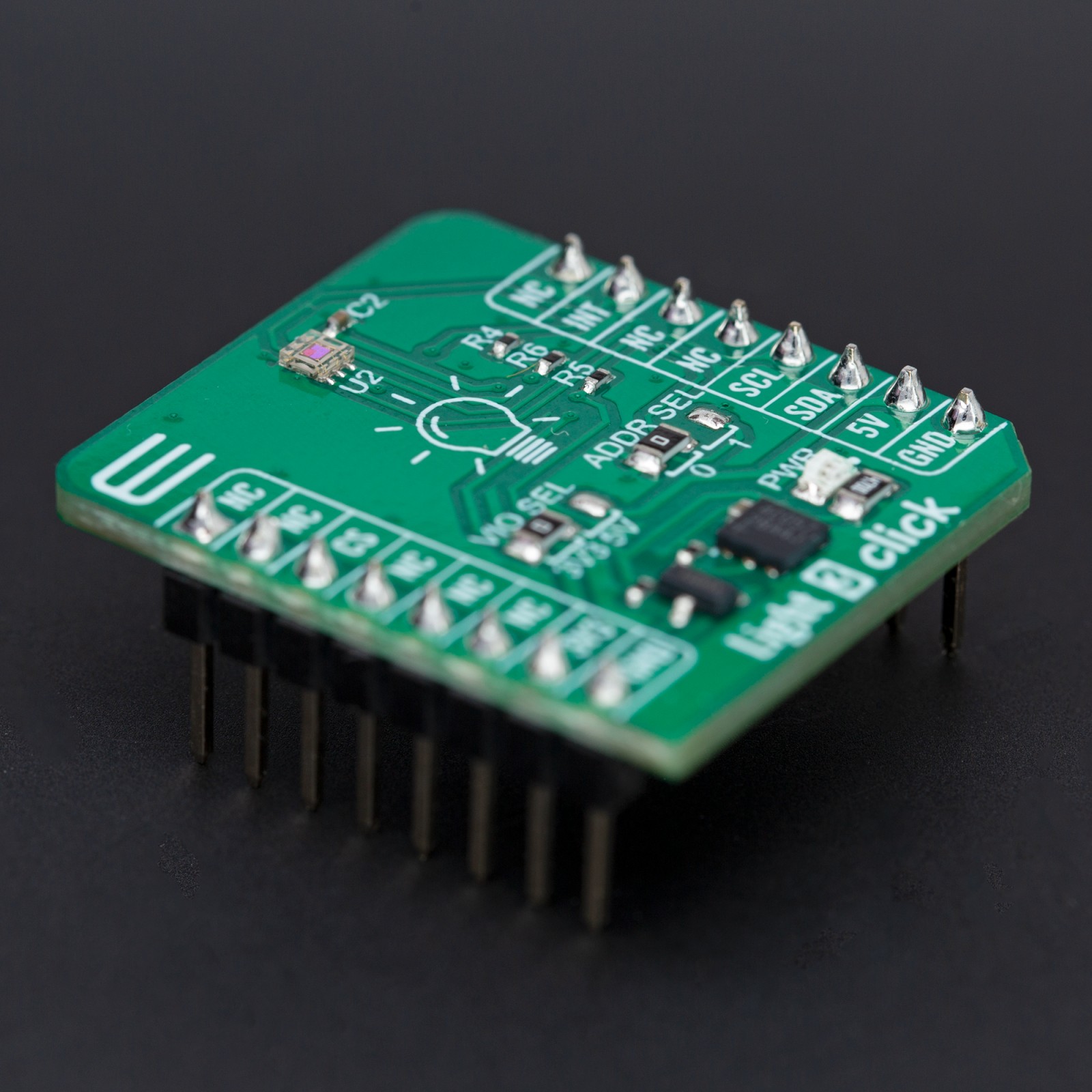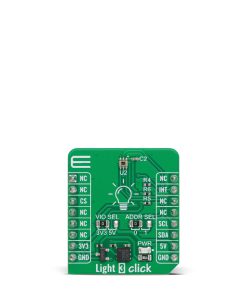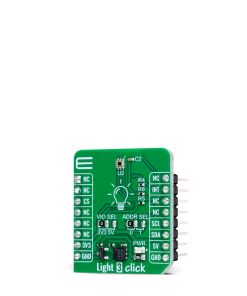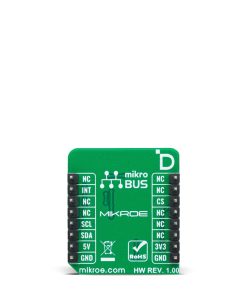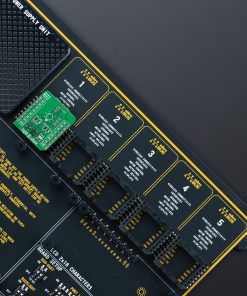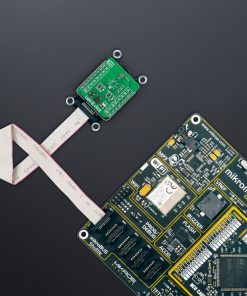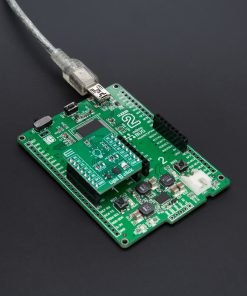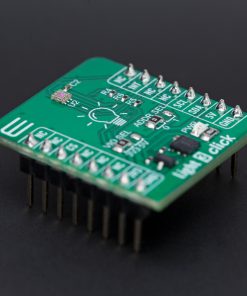Subtotal: R800.00
Light 3 Click
R370.00 ex. VAT
Light 3 Click is a compact add-on board for precise ambient light measurement in automotive applications. This board features the OPT4003-Q1, an automotive-grade digital ambient light sensor from Texas Instruments. This digital ambient light sensor excels in detecting both visible and near-infrared light with high accuracy, thanks to its dual-channel functionality and filters that mimic the human eye’s response while efficiently segregating NIR light. The board features semi-logarithmic output for extensive light intensity range coverage, automatic gain adjustment for optimal resolution without manual intervention, and flexible configuration options to suit various application needs. With its advanced optical filters, the Light 3 Click is an ideal upgrade from traditional light sensing solutions, offering precision, dynamic range, and efficient NIR filtration. It applies to various automotive systems, including interior and exterior lighting, entertainment units, adaptive mirrors, and head-up displays.
Light 3 Click is fully compatible with the mikroBUS™ socket and can be used on any host system supporting the mikroBUS™ standard. It comes with the mikroSDK open-source libraries, offering unparalleled flexibility for evaluation and customization. What sets this Click board™ apart is the groundbreaking ClickID feature, enabling your host system to seamlessly and automatically detect and identify this add-on board.
Stock: Lead-time applicable.
| 5+ | R351.50 |
| 10+ | R333.00 |
| 15+ | R314.50 |
| 20+ | R302.66 |

 BEE Click
BEE Click 